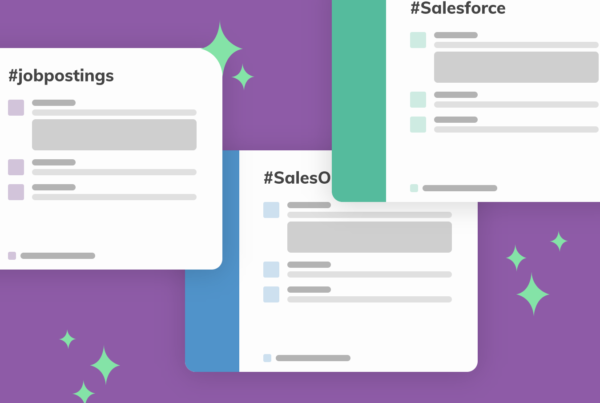As anyone in operations will tell you, managing a tech stack is tough. There’s no “Tech Stack 101” college course you can enroll in or guidebook you can buy to navigate the best technology for your business. Further complicating matters? More often than not, most people who end up managing a tech stack do not have a computer engineering or software architecture background.
So how does one go about building and managing the technology services needed to keep things running smoothly? Luckily, you came to the right place. By familiarizing yourself with an existing tech stack (or building your own) and learning the impact of changes (in other words, breaking things) you’ll be well on your way to operating a tech stack that can scale with and support your business throughout different stages of growth.
Defining Your Tech Stack
Tech stacks — also known as a solutions stack or technology infrastructure — differ from business to business depending on their unique needs and encompasses the set of technologies, software, and tools used to develop and deploy all things digital.
Building vs. Inheriting a Stack
If we’re lucky, we get to build the tech stack from scratch on your own. But unless you’re starting your own company, chances are you’ll be inheriting someone else’s purchases — and the mess that goes along with it.
When you build your own tech stack, you have control over the tools and applications that are relevant to your company’s goals.
If you inherit a tech stack, however, you could potentially be left with a dysfunctional stack. If a complete rebuild is off the table (due to time, budget, etc.), you’ll have to figure out how to make it work.
Change Management
Now that you have this tech stack, the next questions you’ll need to ask yourself are: “How do I change it without breaking everything?” and “How can I make sure that other teams know what I changed?”
Traditionally, change management has been a very manual process that involves keeping track of things in Google Docs or spreadsheets. This is problematic for many reasons: It’s not time-efficient, it’s prone to errors, and it often overlooks how changes will impact the entire team.
Typically, a team doesn’t know it has a problem until the system is already suffering. What you need is a way to QA, manage, communicate, document, and fix problems proactively to avoid costly and time-consuming problems down the road.
These exact reasons are why we created Sonar, a change management software for operations teams designed to manage your tech stack, give clarity, and document changes and processes before things break. The great thing about Sonar is that it can also help with navigating Salesforce and process implementation while functioning as a single source of truth to use with cross-functional teams. This is essential because, if you don’t get change management support when aligning your teams on changes in your tech stack and technology changes across different tools, your operations will be disastrous — costing you unnecessary amounts of money, time, and energy or even data loss.
Change and Impact Analysis
Companies need better processes, documentation, and communication to easily work within their technical systems, and the first step in doing so is to identify key roadblocks. Start with one — your biggest pain point — and go solve it first, regardless of if it requires buying new software or not. For example:
Problem: You can’t make changes in our tech stack without causing negative impacts across your entire team.
Solution: Eliminate blind spots and changes that impact your tech stack, but also make those changes faster and with confidence.
Problem: You can’t grow because you’re always putting out fires from broken connections.
Solution: Automate your process in place of tedious, manual Google doc updates.
Problem: You can’t centralize your operations to one platform across siloed teams.
Solution: Allow your sales, marketing, revenue, and customer success teams to work together.
Problem: You can’t work efficiently if you’re drowning in outdated spreadsheets and complicated flow charts with no way to showcase or collaborate across your organization.
Solution: Save time instead of wasting it to fix the issues caused by technical debt.
Once you solve one big problem, you’ll notice things will start to run smoother, and pretty soon that dysfunctional tech stack will not only become functional, but fast and efficient, too. In doing so, you’ll become a champion for your end-users.
Building a Tech Stack That Grows With Your Business
Selecting the correct technology and tools matters, because you’ll ultimately want a tech stack that scales with growth. A mentor of mine, early-stage SaaS executive and investor Pete Kazanjy, has always emphasized the saying “skate to where the puck is going” in reference to building for future growth and scales. Don’t just solve for the problems you’re facing today — solve for the ones you expect to face in the future.
So when your team approaches you about buying software, make sure they know what problems it’s going to solve for the company, and how they will measure success.
As part of the software evaluation and purchasing process, we’d recommend examining the current landscape but also what steps will need to be taken for improvement. For example, you’ll want to ask yourself questions around context, use cases and integrations, options, and timeline.
- Why do we need this software?
- In the past what have we done to solve this?
- What system(s) does this new software integrate with?
- What are the risks or assumptions we’ve made about this software/solution?
- How quickly can the solution be put in place?
- Which team(s)/member(s) does this impact?
Breaking It All Down
While managing your tech stack can be an uphill climb, a platform like Sonar can make navigating that climb so much easier. With our change management platform, you’ll always know where you stand with the following:
- Processes: Make changes and see how change impacts the entire team.
- Communications: Showcase and collaborate on changes throughout your organization.
- Documentation: Easily update documents across multiple platforms and channels with one platform.
By enabling operations teams to create a repeatable and scalable motion for growing and managing their tech stack, you’ll empower those people to collaborate productively and anticipate every change from a single platform.
Think Sonar could be a helpful solution for your operations team? Try it for free and find out now. Request a demo to learn more.





